Researchers clock the speed of brain signals
New studies illuminate brain's complex neurotransmission machinery, point to potential source of problems leading to neurodegenerative and psychiatric conditions.
Jun 22nd, 2011
Read more
New studies illuminate brain's complex neurotransmission machinery, point to potential source of problems leading to neurodegenerative and psychiatric conditions.
Jun 22nd, 2011
Read moreInnovaGeek freely offers the opportunity to publish "teasers of technologies and innovations" available worldwide on its website and mobile application. The goal is to increase the technology visibility for free to help innovators to find partners, new customers or new markets or selling patents.
Jun 22nd, 2011
Read more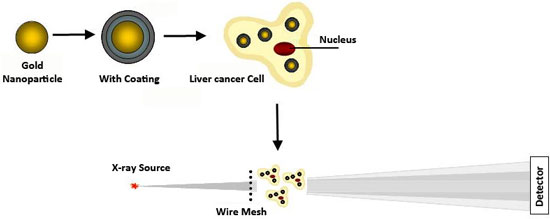 A research team led by Brown University reports some promising results for earlier diagnosis of hepatocellular carcinoma, the most common cancer to strike the liver. More than 500,000 people worldwide, concentrated in sub-Saharan Africa and Southeast Asia, are diagnosed with it yearly. Most of those afflicted die within six months.
A research team led by Brown University reports some promising results for earlier diagnosis of hepatocellular carcinoma, the most common cancer to strike the liver. More than 500,000 people worldwide, concentrated in sub-Saharan Africa and Southeast Asia, are diagnosed with it yearly. Most of those afflicted die within six months.
Jun 22nd, 2011
Read more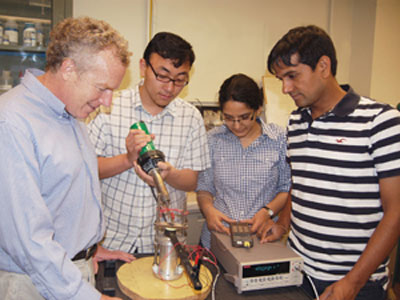 University of Minnesota engineering researchers in the College of Science and Engineering have recently discovered a new alloy material that converts heat directly into electricity. This revolutionary energy conversion method is in the early stages of development, but it could have wide-sweeping impact on creating environmentally friendly electricity from waste heat sources.
University of Minnesota engineering researchers in the College of Science and Engineering have recently discovered a new alloy material that converts heat directly into electricity. This revolutionary energy conversion method is in the early stages of development, but it could have wide-sweeping impact on creating environmentally friendly electricity from waste heat sources.
Jun 22nd, 2011
Read moreFor nine days this month, 30 graduate students have been learning how to make nano-sized devices. In six three-hour lab sessions, students learned how to operate equipment and perform the processes crucial to fabricating nano-scale devices.
Jun 22nd, 2011
Read moreDutch and Swiss researchers have developed a biomimetic nanopore that offers a sophisticated test and measurement platform for the way proteins enter the nucleus of a cell. This study provides evidence of how a biomimetic nuclear pore can be created to monitor how single proteins move across the pore.
Jun 22nd, 2011
Read more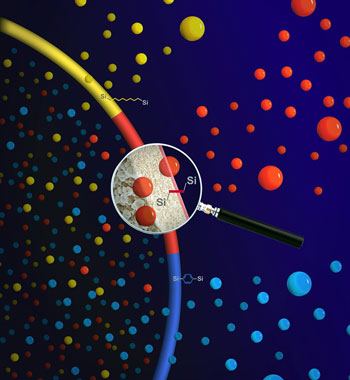 Hessel Castricum from the University of Amsterdam has developed a versatile membrane that is capable of separating gas and liquid mixtures in an energy-efficient manner. The new membrane can probably be employed under industrial conditions on a large scale in the future. This has not been possible until now, because virtually all membranes developed so far are insufficiently stable.
Hessel Castricum from the University of Amsterdam has developed a versatile membrane that is capable of separating gas and liquid mixtures in an energy-efficient manner. The new membrane can probably be employed under industrial conditions on a large scale in the future. This has not been possible until now, because virtually all membranes developed so far are insufficiently stable.
Jun 22nd, 2011
Read more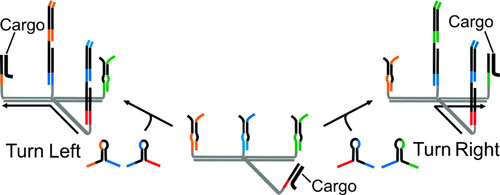 Scientists have developed a programmable sub-microscopic molecular machine made of synthetic DNA that moves between track locations separated by 6nm. The robot, a short strand of DNA, follows instructions programmed into a set of fuel molecules determining its destination.
Scientists have developed a programmable sub-microscopic molecular machine made of synthetic DNA that moves between track locations separated by 6nm. The robot, a short strand of DNA, follows instructions programmed into a set of fuel molecules determining its destination.
Jun 22nd, 2011
Read more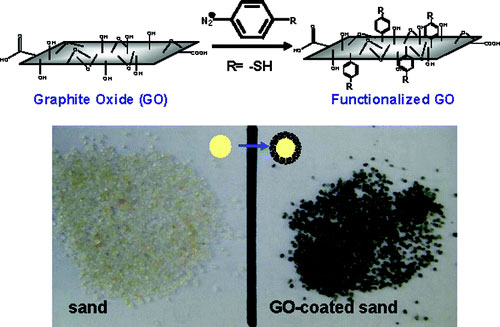 Scientists have developed a way to transform ordinary sand - a mainstay filter material used to purify drinking water throughout the world - into a "super sand" with five times the filtering capacity of regular sand.
Scientists have developed a way to transform ordinary sand - a mainstay filter material used to purify drinking water throughout the world - into a "super sand" with five times the filtering capacity of regular sand.
Jun 22nd, 2011
Read more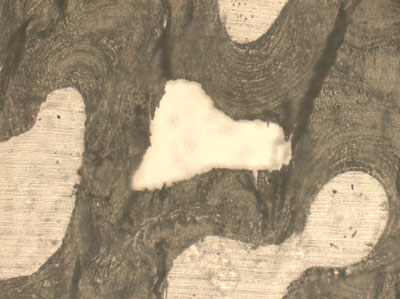 A new technique developed at Rensselaer Polytechnic Institute allows researchers to collect large amounts of biochemical information from nanoscale bone samples.
A new technique developed at Rensselaer Polytechnic Institute allows researchers to collect large amounts of biochemical information from nanoscale bone samples.
Jun 22nd, 2011
Read more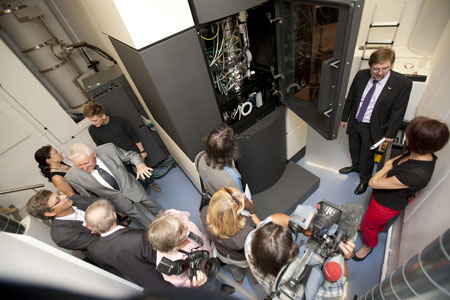 Mit dem ASTEM (Austrian Scanning Transmission Electron Microscope) koennen Wissenschafter am Zentrum fuer Elektronenmikroskopie Graz sowie am Institut fuer Elektronenmikroskopie und Feinstrukturforschung der TU Graz kuenftig in voellig neue Dimensionen vordringen.
Mit dem ASTEM (Austrian Scanning Transmission Electron Microscope) koennen Wissenschafter am Zentrum fuer Elektronenmikroskopie Graz sowie am Institut fuer Elektronenmikroskopie und Feinstrukturforschung der TU Graz kuenftig in voellig neue Dimensionen vordringen.
Jun 22nd, 2011
Read more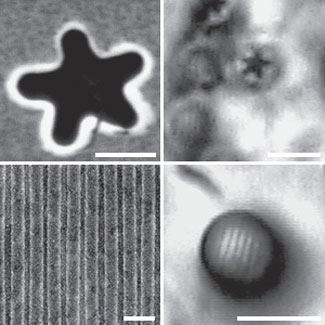 Quartz microspheres could enhance the resolution of an optical microscope beyond its classical diffraction limit.
Quartz microspheres could enhance the resolution of an optical microscope beyond its classical diffraction limit.
Jun 22nd, 2011
Read more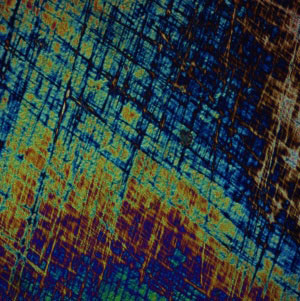 Vertical scanning interferometry is a well-established zero-contact surface characterization technique, but the analysis involved in interpreting the data is complex and computationally intensive. Wee Keat Chong at the A*STAR Singapore Institute of Manufacturing Technology and co-workers have now developed a computationally efficient model for this technique.
Vertical scanning interferometry is a well-established zero-contact surface characterization technique, but the analysis involved in interpreting the data is complex and computationally intensive. Wee Keat Chong at the A*STAR Singapore Institute of Manufacturing Technology and co-workers have now developed a computationally efficient model for this technique.
Jun 22nd, 2011
Read more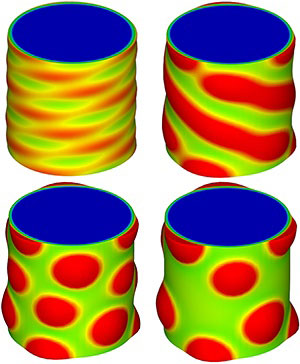 Three-dimensional dynamic simulations shows how the surface morphology of a nanowire changes when subjected to annealing.
Three-dimensional dynamic simulations shows how the surface morphology of a nanowire changes when subjected to annealing.
Jun 22nd, 2011
Read more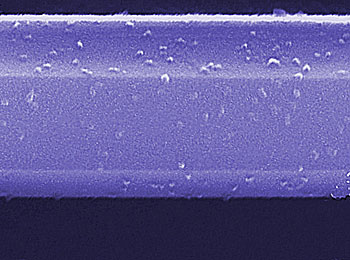 A team of researchers has made nano-sized sensors that detect volatile organic compounds - harmful pollutants released from paints, cleaners, pesticides and other products - that offer several advantages over today's commercial gas sensors, including low-power room-temperature operation and the ability to detect one or several compounds over a wide range of concentrations.
A team of researchers has made nano-sized sensors that detect volatile organic compounds - harmful pollutants released from paints, cleaners, pesticides and other products - that offer several advantages over today's commercial gas sensors, including low-power room-temperature operation and the ability to detect one or several compounds over a wide range of concentrations.
Jun 22nd, 2011
Read more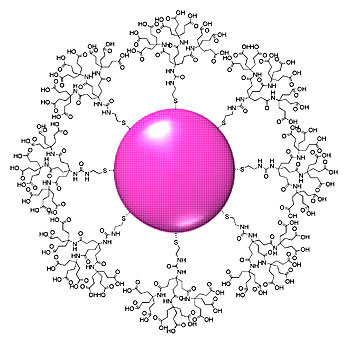 A new paper by researchers from the National Institute of Standards and Technology (NIST) and the National Cancer Institute's Nanotechnology Characterization Laboratory (NCL) proposes not only a sort of gold nanoparticle "testbed" to explore how the tiny particles behave in biological systems, but also a paradigm for how to characterize nanoparticle formulations to determine just what you're working with.
A new paper by researchers from the National Institute of Standards and Technology (NIST) and the National Cancer Institute's Nanotechnology Characterization Laboratory (NCL) proposes not only a sort of gold nanoparticle "testbed" to explore how the tiny particles behave in biological systems, but also a paradigm for how to characterize nanoparticle formulations to determine just what you're working with.
Jun 22nd, 2011
Read more